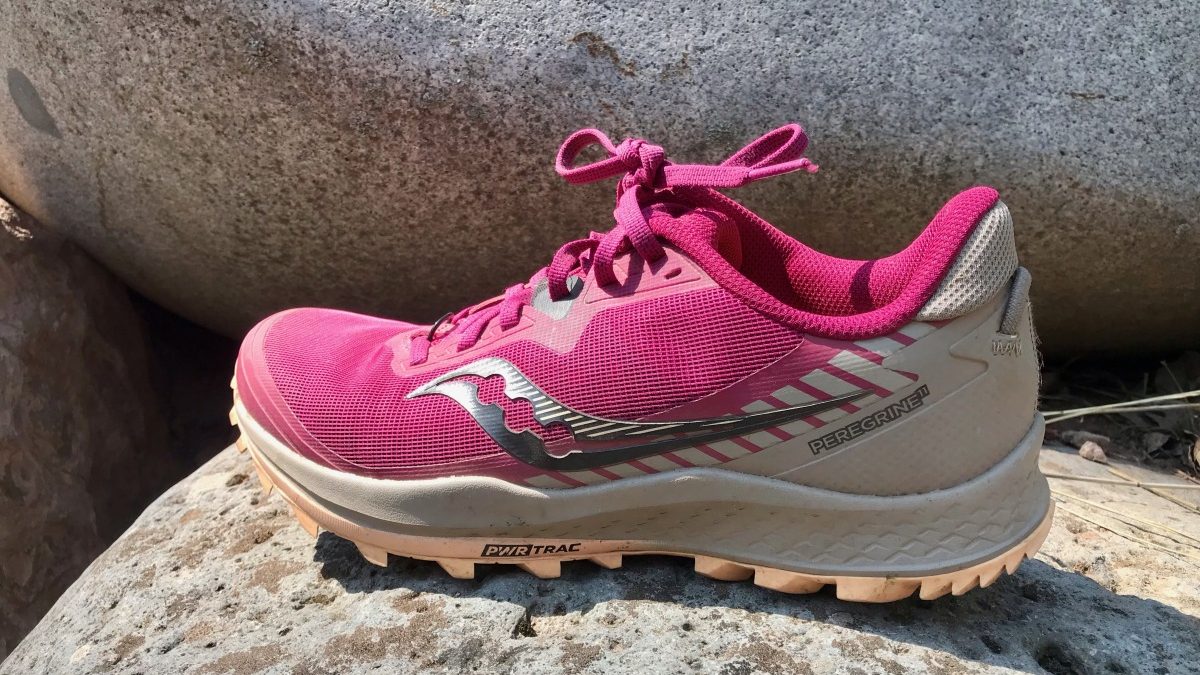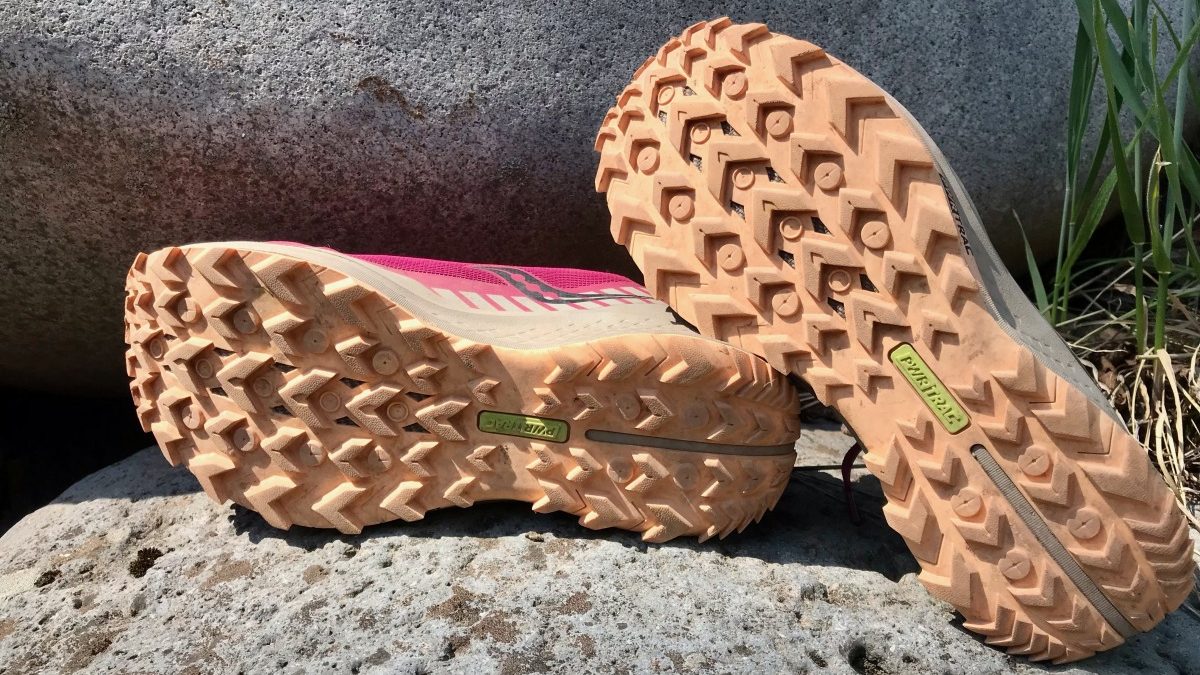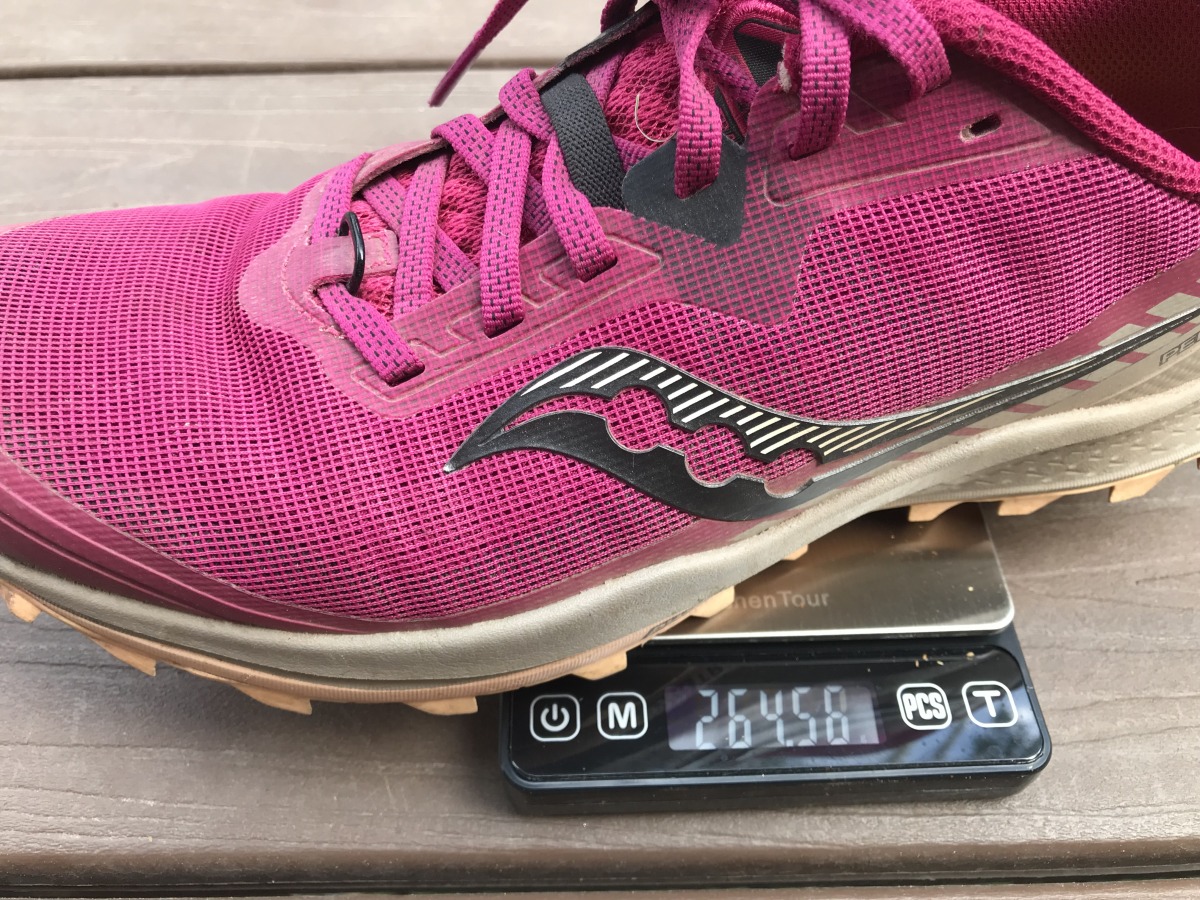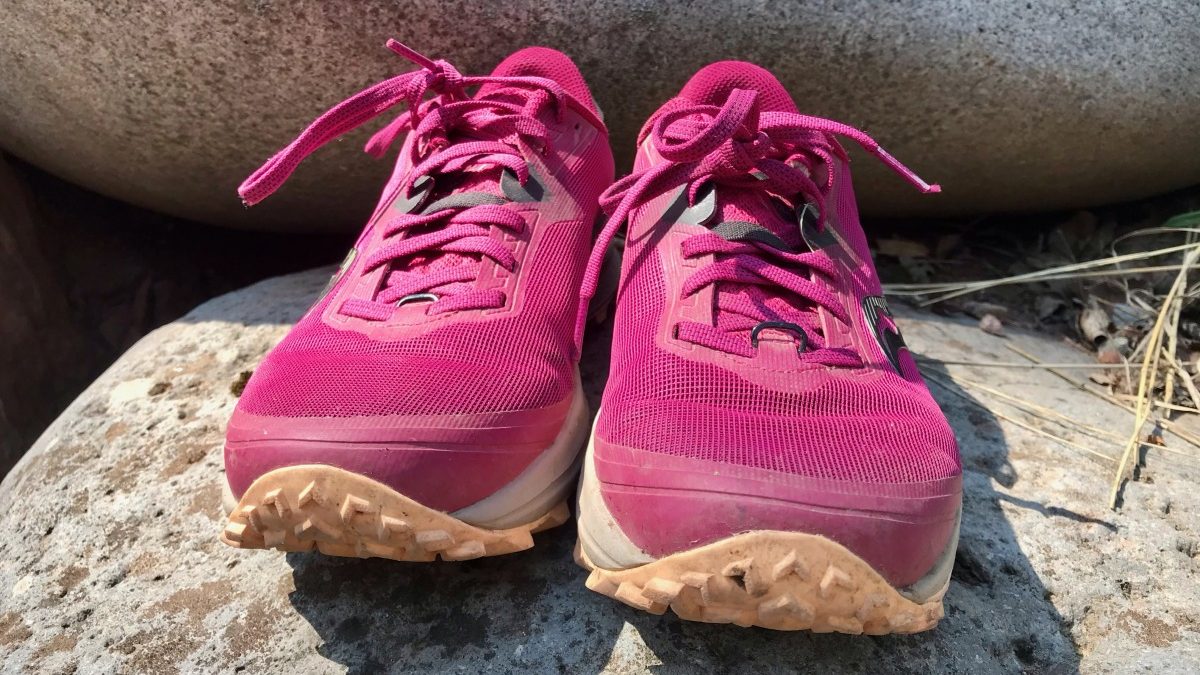
The Saucony Peregrine 11 (available in men’s and women’s) is a robust trail shoe for a variety of terrain.
In the mountains, trail ‘running’ has many forms. Sometimes it’s trail jogging, other times fast-walking, occasionally keep-feet-moving shuffling, or you know, just walking (also sometimes referred to as ‘hiking’). Whatever the case it’s nice to have shoes that can move between speeds, offering traction across a variety of surfaces, protection against rocks and other hard objects underfoot and giving a comfortable fit for long miles. In pursuit of such a shoe, I’ve been running (in all its forms) around in the Saucony Peregrine 11 this summer. Here are my thoughts on this rugged trail running shoe.
First, a little about me. I’m not a ‘runner’ like my friends who sign up for mountain 50ks and log 100, 50, or even — let’s be real — 30 miles a week. I’m a skier and a cyclist and I run to fill the spaces in between. It’s incredible that some people can cover marathon distances across the high country and sometimes I have romantic visions of doing the same. For the most part, though, I top out around 10 miles in any given effort and am not ashamed to admit that some of that is spent shuffling, especially at altitude and across difficult terrain.
So, my priorities in a shoe are comfort, protection, stability and durability.
Overview
The Saucony Peregrine 11 is the latest iteration of a beloved trail shoe from Saucony. (Fun fact: Saucony has been making running shoes since long before any of us were born — 1898. Also, the name comes from a creek in Kutztown, Pennsylvania, where I coincidentally got my undergraduate degree. Who knew?!)
The Peregrine 11 features a 4mm drop, plush padding on the uppers, deeply lugged soles, a rock plate and welded overlays covered in thick rubber. They’re built kind of like a tank as far as light trail runners go, which some runners will love and others less so. Personally, I’m into it. I’ve found that the standby tradeoffs in ski touring parallel those in trail running shoes — the lighter the gear gets the, less durability and the higher the cost. This shoe seems to strike a nice middle ground.

The shoe features padded uppers, aggressive lugs, and thick rubber to provide maximum protection from objects.
Comfort and fit
It’s a good sign when you try a shoe on and don’t want to take it off. Not long after lacing up the Peregrine 11, I was eying up my tattered, ultra light Adidas Terrex and wondering how I’d held onto them for so long. The shoe cradled my foot and felt immediately supportive. The thick padding of the tongue and upper material let me crank down the laces without creating pressure points, a good thing as I like to keep my shoes snug especially in rougher terrain.
I have an average width foot and the Peregrine 11 fit like a glove. My usual size (women’s 9, 40.5) offered ample room in the toe box and zero heel slip. The only discomfort I’ve had from fit is that the mesh rubs on a small bunionette I have forming on my right pinky toe, usually noticeable after about 30 minutes of activity.
I also have an average height arch and always use an insole in my boots and shoes. In the case of running shoes it’s usually a Superfeet Blue, which has worked fine in this shoe.
Protection and stability
Whether scrambling up rocky, uneven terrain or bounding down it, the lugs on the Peregrine’s soles offer excellent grip. I also found that they handled mud and other slippery surfaces decently well.

The aggressive chevron shaped lugs give good confidence to tackle all varieties of trail conditions.
The rock plate and toe bumper kept my feet protected from roots, rocks or anything else that pops up in the trail. The rock guard and robust lugs do contribute to the overall stiffness of the shoe, which I’ve read other reviewers call as too stiff. As someone who spends a lot of time shuffling uphill in Grilamid, I personally didn’t notice these shoes as particularly stiff but it’s worth pointing out for more discerning runners.
All of the protection and stiffness also translates into a noticeable disconnect between your feet and the dirt surface. This isn’t to say the shoes aren’t nimble — they have a close to the ground feel that is in no way clunky or cumbersome — but if you’re the type of runner who really likes to feel the ground underfoot, the protection in this shoe takes some of that sensation away.
As for stability, the shoe is sturdy underfoot and supportive. In some shoes I’ve noticed a tendency to roll my ankles while on trails, which I haven’t experienced in these. I feel comfortable moving quickly up, down and across uneven ground in a way that’s a bit thoughtless, and that’s a good thing.
A few cons
All that padding may contribute to fit and comfort but it is hot. As the mercury has crept higher in the Rockies this summer, the limited breathability of this shoe is noticeable. I imagine I’ll welcome a little extra insulation during the cooler months and for winter running but it’s a detractor in summer heat.

On the scale of trail runners, I’ve heard this shoe called ‘heavy’. I wouldn’t categorize that based on my experience, but light weight aficionados might.
Compared to lighter trail runners out there, the Peregrine 11 is heavy. Personally I didn’t notice the weight when they were on my feet, but if you want the true featherweight feel, there are lighter options out there.
Durability
In the past, I’ve found some lugged trail runner soles to be on the softer side. This can help with comfort and stickiness but not necessarily longevity. I personally find it disappointing when a $140 shoe wears down prematurely, especially since I consider myself pretty light on gear. That said, I haven’t noticed substantial where on these shoes after roughly 100 miles, primarily on trails with a little bit of pavement.
Conclusion
For the trail runner/jogger/shuffler/walker who wants a solid shoe that can handle all varieties of terrain, the Peregrine 11 is a good option. Those with wider feet may find the toe box a little tight, but do have the option to choose a wide model. The shoes are available in both men’s and women’s in a variety of fun colors, including mine: sweet, sweet magenta.
Shop for the Men’s or Women’s Saucony Peregrine 11
Manasseh Franklin is a writer, editor and big fan of walking uphill. She has an MFA in creative nonfiction and environment and natural resources from the University of Wyoming and especially enjoys writing about glaciers. Find her other work in Alpinist, Adventure Journal, Rock and Ice, Aspen Sojourner, AFAR, Trail Runner and Western Confluence.

